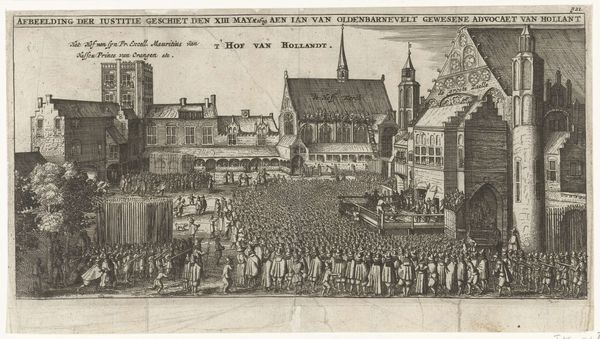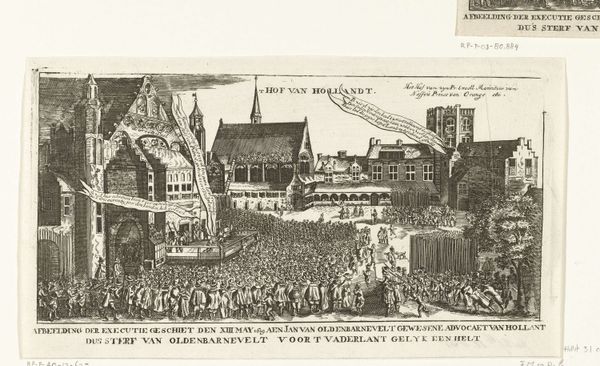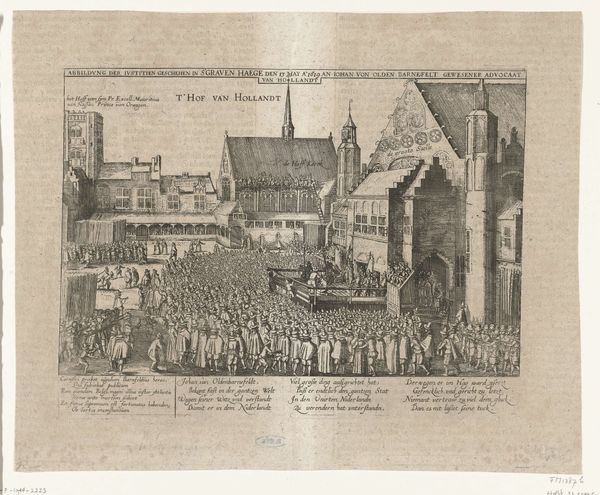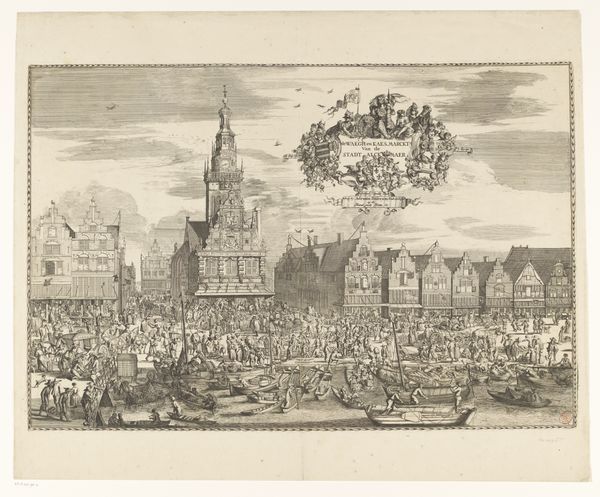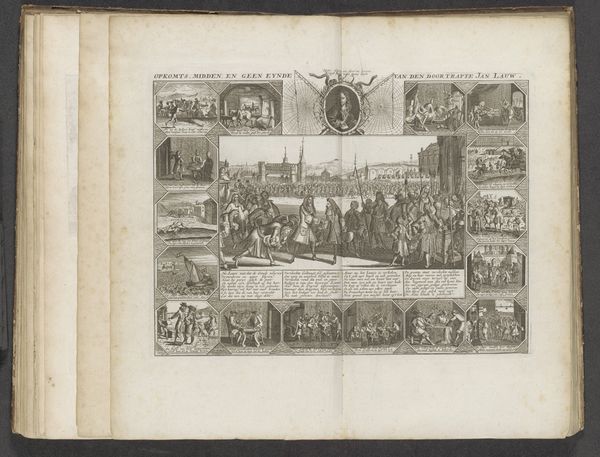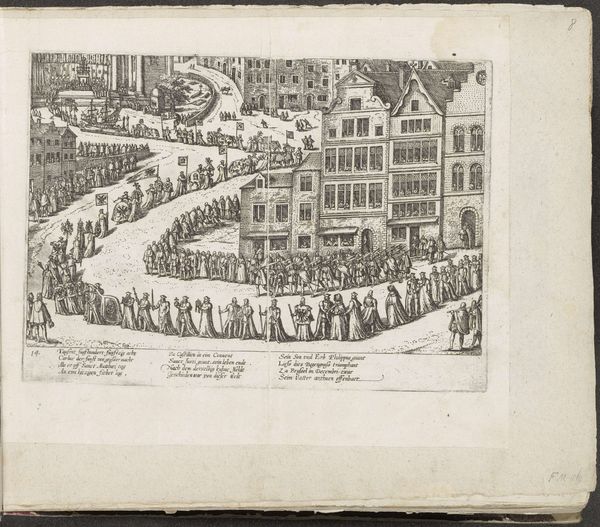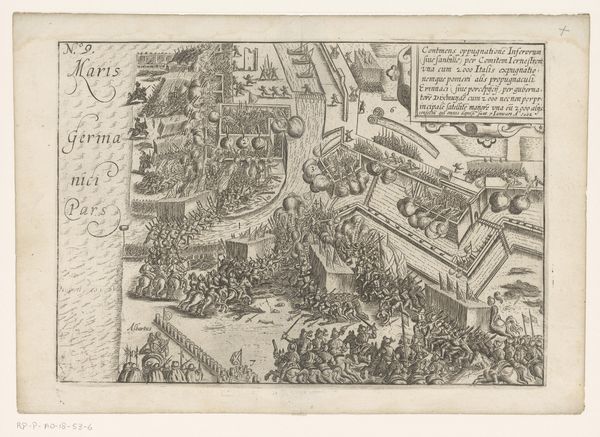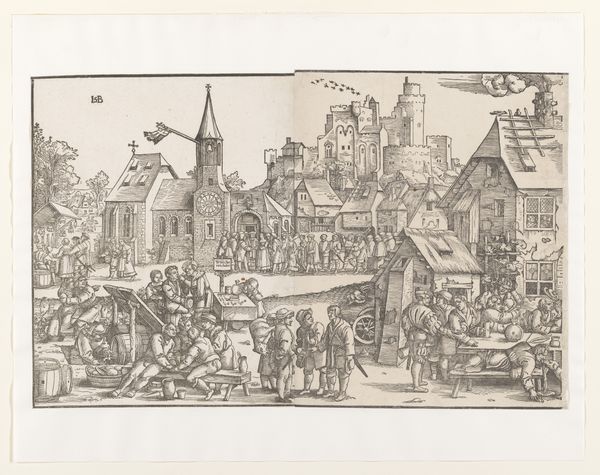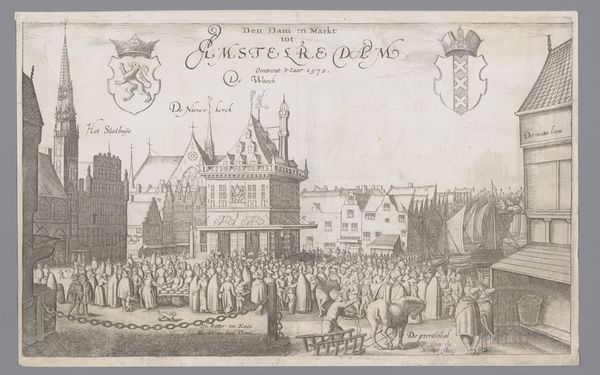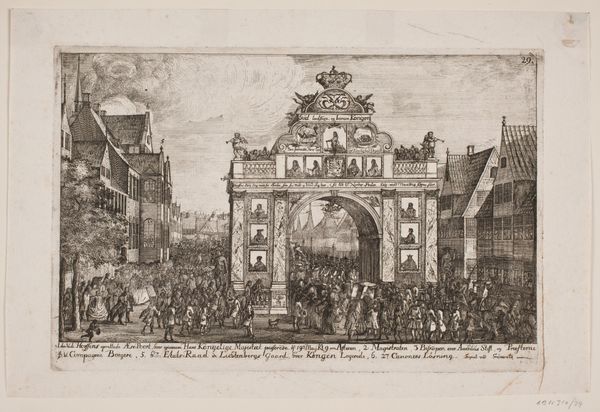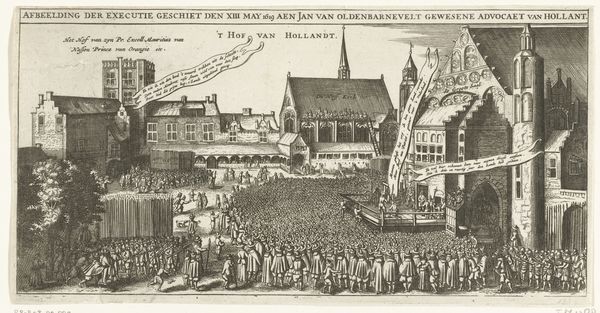
print, engraving
#
narrative-art
#
baroque
# print
#
cityscape
#
history-painting
#
engraving
Dimensions: height 142 mm, width 240 mm
Copyright: Rijks Museum: Open Domain
Curator: This engraving, dating from the early 18th century, depicts "The Beheading of Johan van Oldenbarnevelt in 1619." It’s a busy scene; what is your immediate take? Editor: Somber. The sharp lines of the architecture contrast bleakly with the sprawling crowd and the dark subject matter. Even as a static image, you feel the tension rippling through the crowd assembled for this spectacle. Curator: Note the composition—the artist, though anonymous, carefully arranges the scene, almost like a stage. See how the buildings frame the central event. The details within each structure and even the foliage is remarkably elaborate. Editor: Indeed. That stage-like quality emphasizes the performative nature of public executions in the 17th century. Oldenbarnevelt’s execution was far from neutral; he was a powerful political figure whose death consolidated power. This print helps normalize the act. Curator: Absolutely, but beyond the context, there's an undeniable artistic merit to how space is handled. The foreground provides detail, almost acting as a visual anchor to lead you towards the execution itself. The choice to show the expanse emphasizes a complex dynamic, no? Editor: Space also serves as a crucial marker of political and social power. Who is given access to certain spaces, how they occupy them. Notice that, visually, the architectural structures are given more care in their depiction than the people themselves, save maybe Oldenbarnevelt on the scaffold. Curator: And look how the artist utilizes linear perspective—it’s skillful enough to show the grand scope, while details are carefully placed. This level of artistry almost detaches us from the raw emotion. Editor: While effective, this detached observation is deliberate. Through prints like this one, the ruling powers solidified their own narratives in public memory. They become historical documents—tools in political propaganda wars, reflecting the victor's views. Curator: I find myself admiring its meticulous engraving while feeling uneasy due to what it documents. A fascinating paradox. Editor: Art forces these crucial conversations, regardless of its medium or its message. The engraving remains relevant because it sparks critical evaluation.
Comments
No comments
Be the first to comment and join the conversation on the ultimate creative platform.
